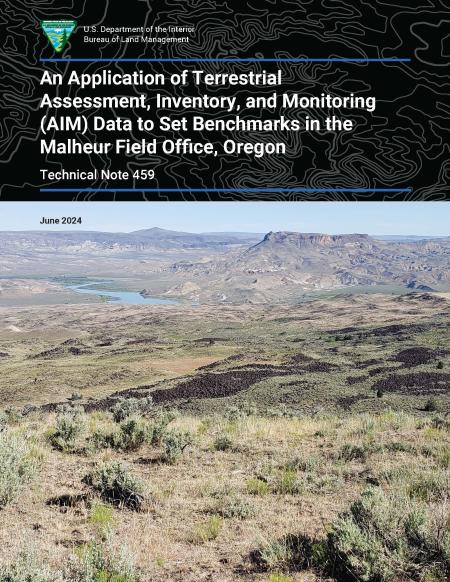An Application of Terrestrial Assessment, Inventory, and Monitoring (AIM) Data to Set Benchmarks in the Malheur Field Office, Oregon

Technical Note 459
The mission of the Bureau of Land Management (BLM) is to sustain the health, diversity, and productivity of the public lands for the use and enjoyment of present and future generations. The BLM manages approximately 245 million acres of public land for multiple uses, including livestock grazing, energy development, wildlife habitat, and outdoor recreation. Data collected through the BLM Assessment, Inventory, and Monitoring (AIM) Program represent one of the largest available datasets to inform resource management decisions on public lands. This technical note serves as a companion to BLM Technical Note 453, “Guide to Using AIM and LMF Data in Land Health Evaluations and Authorizations of Permitted Uses,” by providing an example of using AIM data to set quantitative benchmarks for land health assessments and evaluations. An interdisciplinary team set benchmarks for four terrestrial AIM indicators to evaluate Oregon/Washington land health standard 1 for a land health evaluation within the Malheur Field Office. This technical note describes how the team completed the five steps outlined in Appendix 2 of Technical Note 453 using terrestrial AIM data to establish the benchmarks. After benchmarks were established, the team applied them to terrestrial AIM points within a group of allotments. The technical note concludes with discussion about whether the area is achieving the standard and lessons learned.
